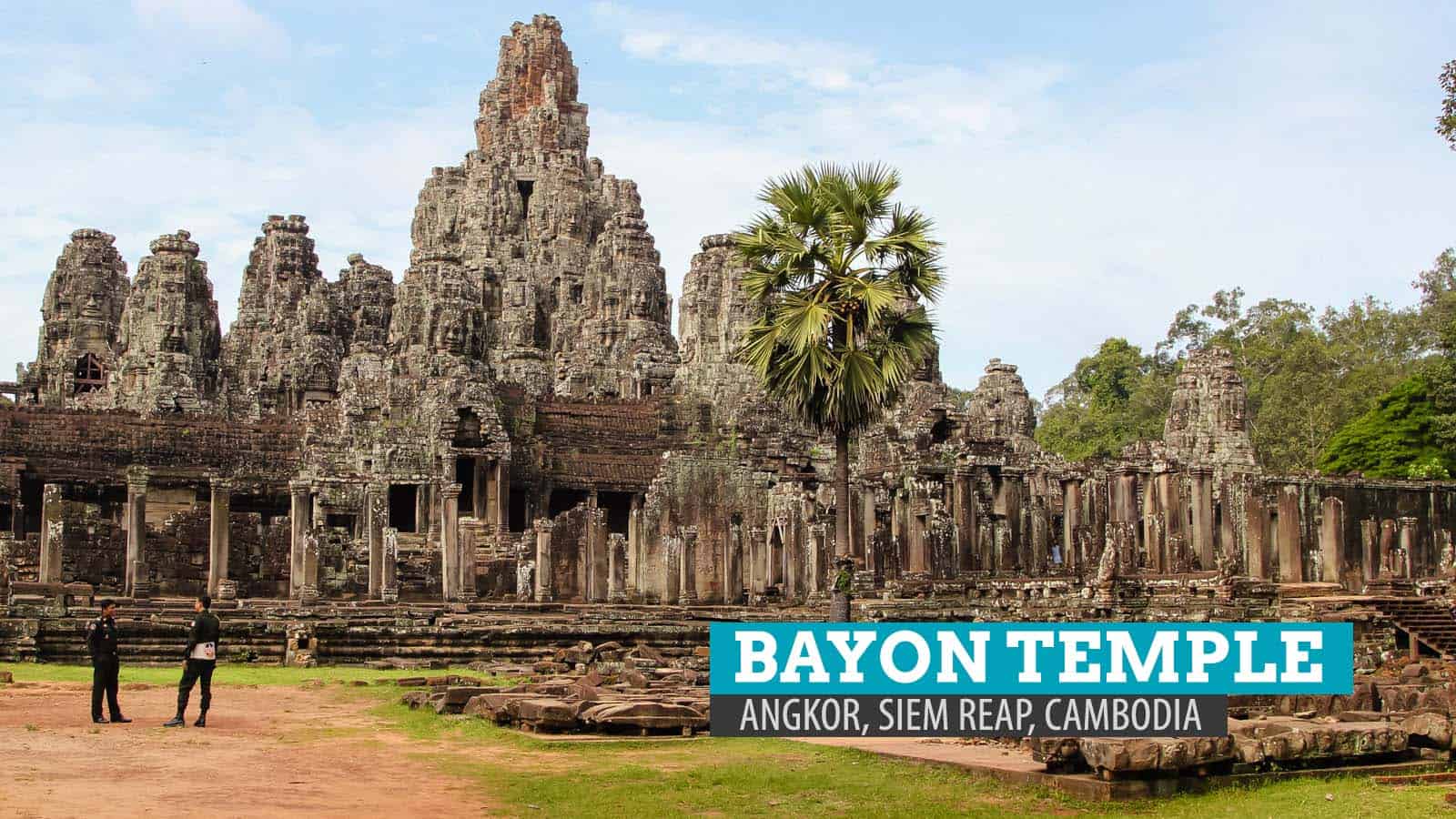2012 • 11 • 25
Making my way in between the walls of the stone labyrinth, I could not shake off the feeling that someone was watching me. Who would not feel that? The Bayon Temple is dominated by towers with faces on every side. And they’re not just faces. They’re giant, smiling faces. You know, the same kind of smile that Mona Lisa has — enigmatic, magnetic, bordering on creepy. They make Bayon Temple one-of-a-kind. Its many faces watch over the temple that was at the dead center of the once thriving Angkor Thom.
Angkor Thom
Literally “Great City,” Angkor Thom is the last capital city of the great Khmer Empire. Built under the rule of King Jayavarman VII in the late 12th century, it spans an area of 9 square kilometers, harboring official buildings of the kingdom and residences of priests. Most of these structures were said to be made of wood. Thus, they failed to survive the test of time, leaving very little trace. However, many of the ruins of the stone monuments still stand today, including the Terrace of the Leper King, the Terrace of the Elephants, the Baphuon, Prah Palilay and more. Bayon Temple, one of the surviving monuments, stands at the very center of the city.
The Gates of Angkor Thom
The driver of the tuktuk that I hired stopped right before the figure of serpent heads that formed a fan. We came from Angkor Wat, and I had yet to recover from the shock brought about by its greatness. But there I was, on the way to the next temple that would blow me away. The driver pointed at the queue of massive statues skirting both edges of a causeway that led to a spectacular 23-m tall, three-towered, four-faced gate.
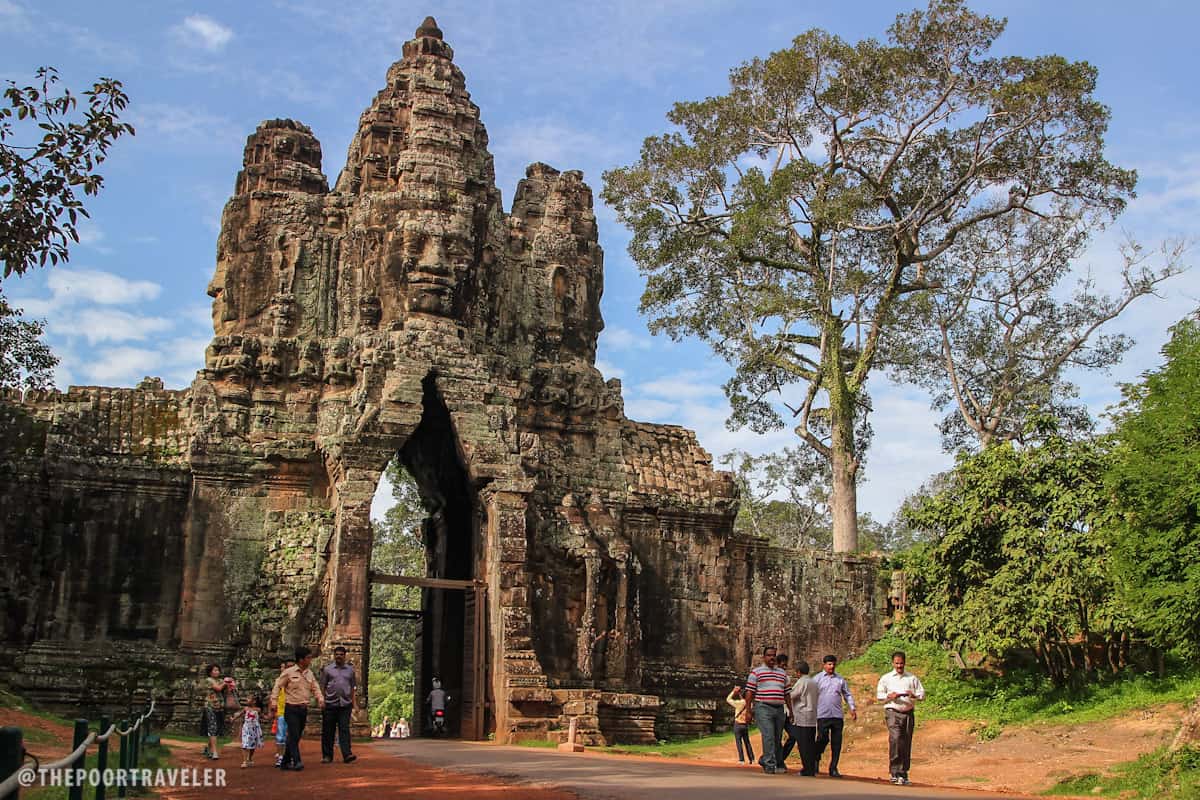
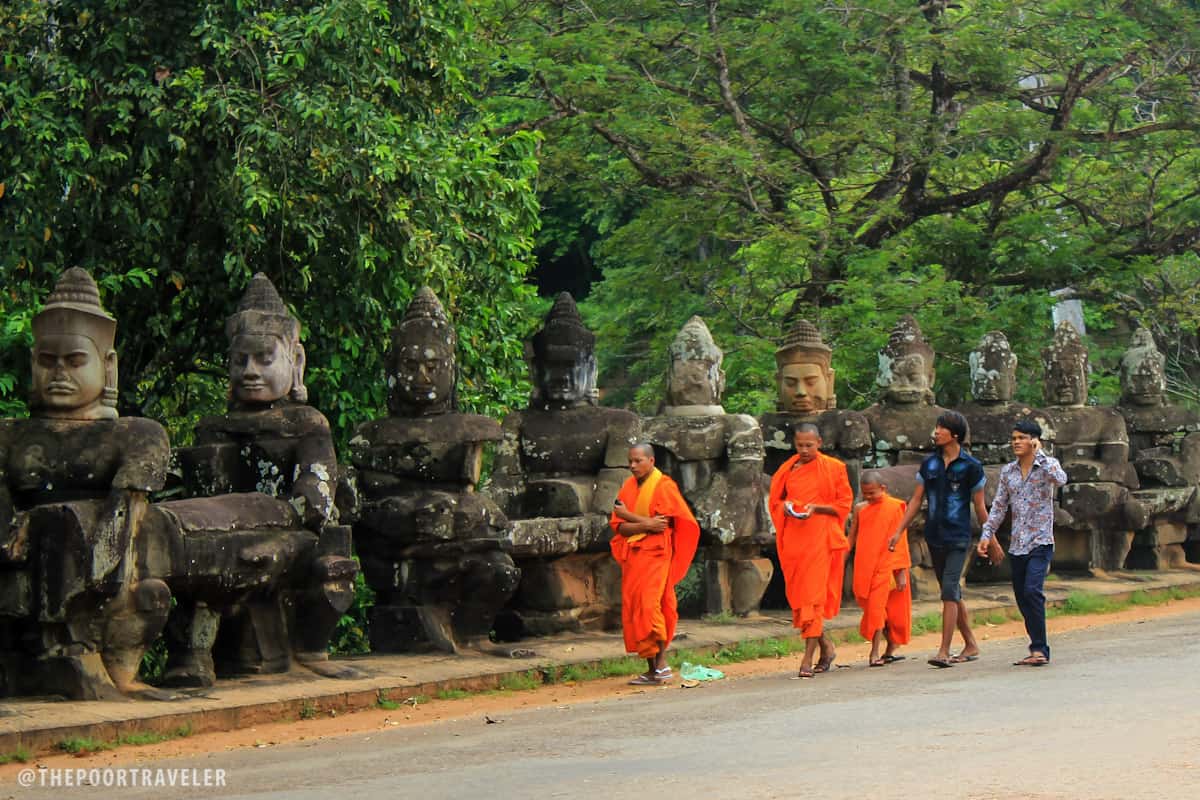
He signaled that he would take a photo of me and pointed at the spot where I should stand. (He could not speak or even understand English, not even a word. Several times I tried to ask for his name, but a conversation with him was always a dead end. But I love him. I met him the day before near a restaurant where his vehicle was parked and I approached him to ask for directions. He could not speak English but he went out of his way to dig deep in his chest of maps to show me the directions and answer my question. That’s when I decided that I would hire him the following day. But that’s for another story.)
I stood next to an angry statue and flashed my best smile. Wait, no flash. Manong driver could not figure out how to operate the camera. I did a brief demonstration and went back beside the statue and smiled again. One, two, three… hmmm. We really could not understand one another. But I wasn’t annoyed or anything. Instead, I was amused. At the very moment I decided to travel alone, I already gave up the idea of having a lot of photographs with me in it. He handed me back my camera and I walked around to snap away.
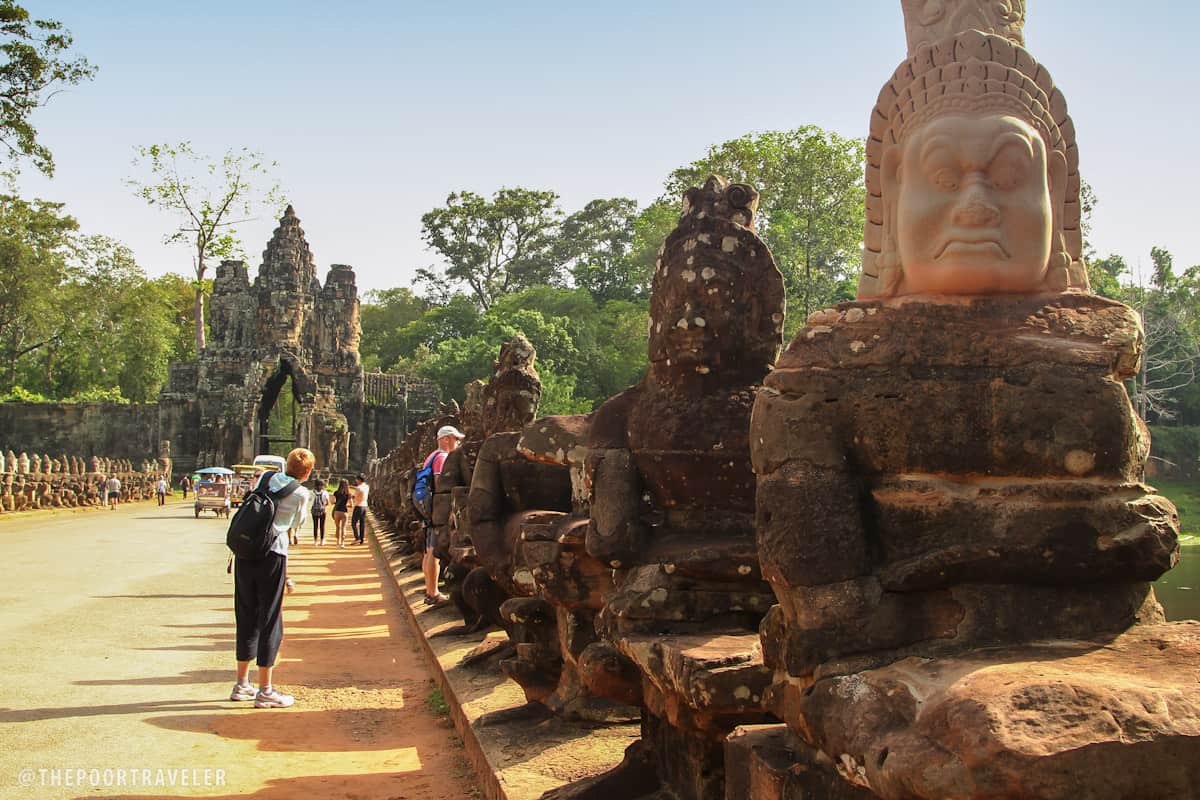
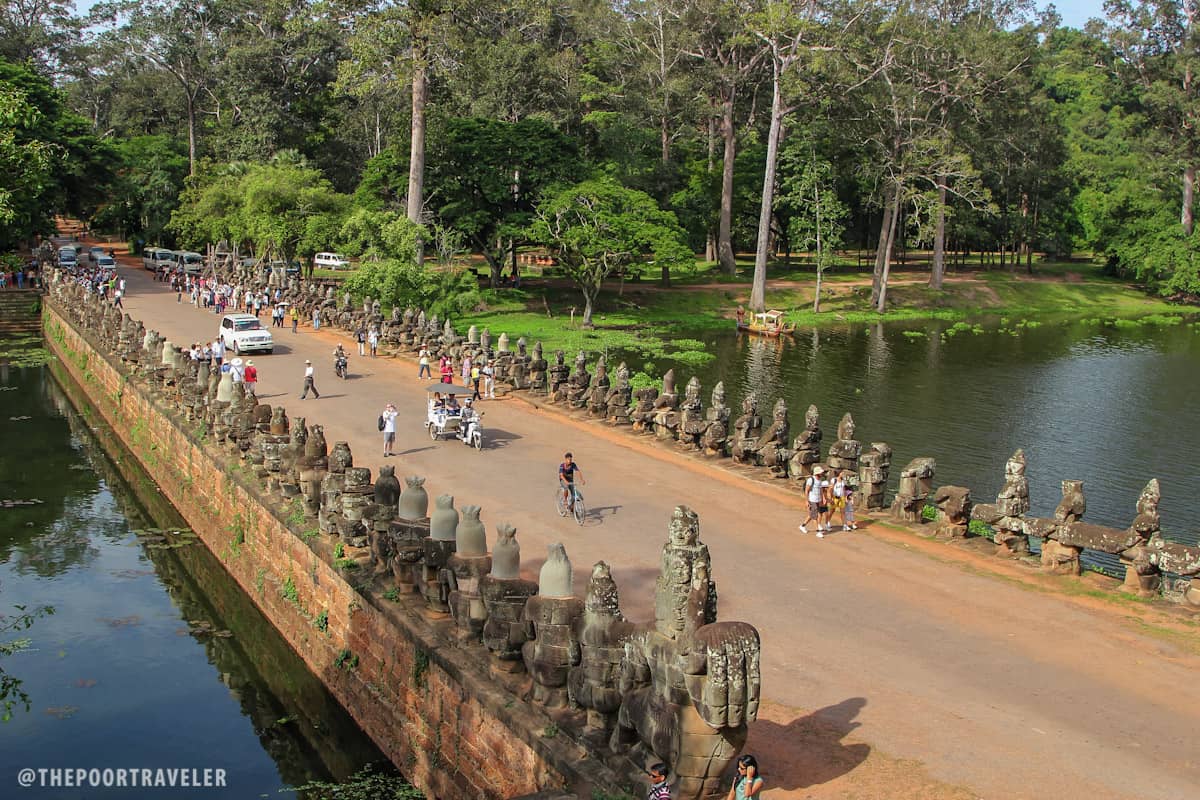
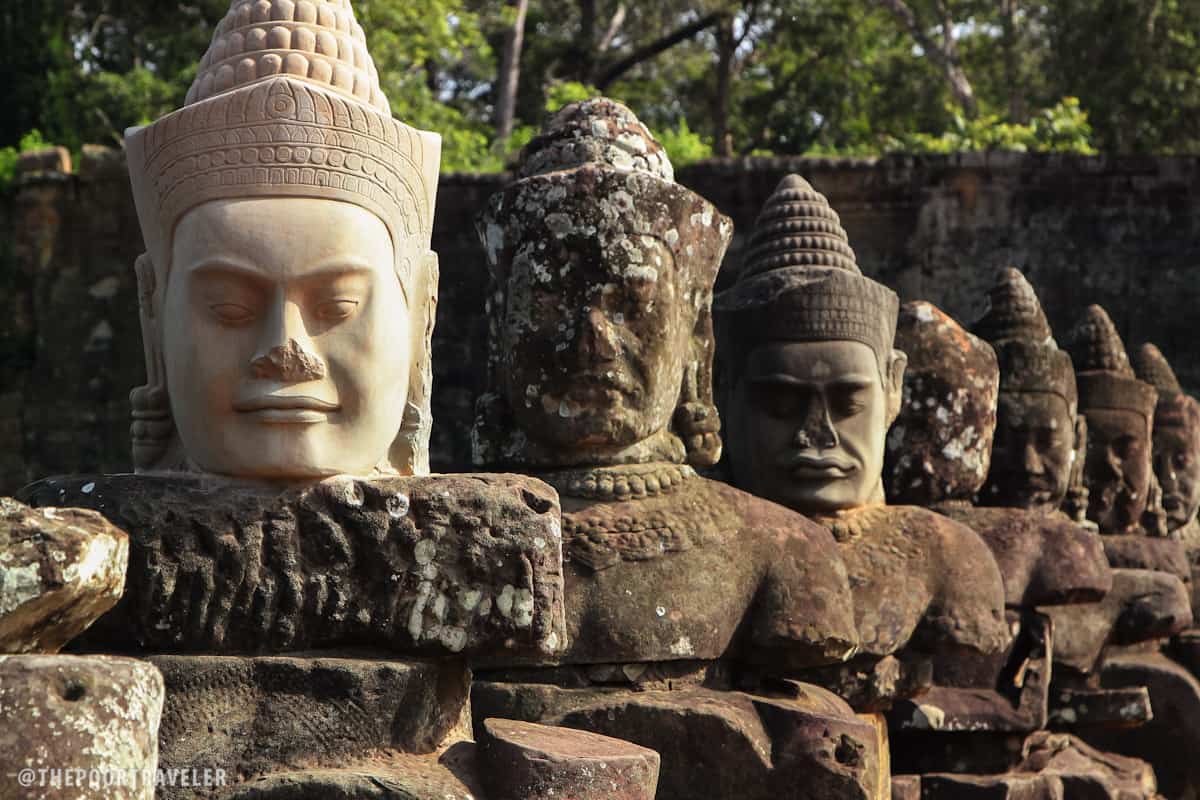
It was later when I finally got hold of a map when I realized that it was the South Gate, one of the five entry points around Angkor Thom, which is fortified by a sandstone wall. The five gates are:
- South Gate – connects Bayon to Angkor Wat
- North Gate
- West Gate
- Victory Gate – connects Bayon to Ta Prohm and Thommanon
- East Gate – also known as Gate of the Dead
I noticed that the statues on the right side of the causeway were all looking furious. Apparently, they are supposed to be demons, and those on the left are gods. Both rows of mythical beings are pulling a nine-headed naga (serpent) on what looks like a game of tug-o-war. The demons are all looking mad, while the gods wear a more peaceful expression. Both sets have headdresses but those on the gods are cone-shaped. Many of the figures are missing their heads and other parts of their bodies.
Prasat Bayon (Bayon Temple)
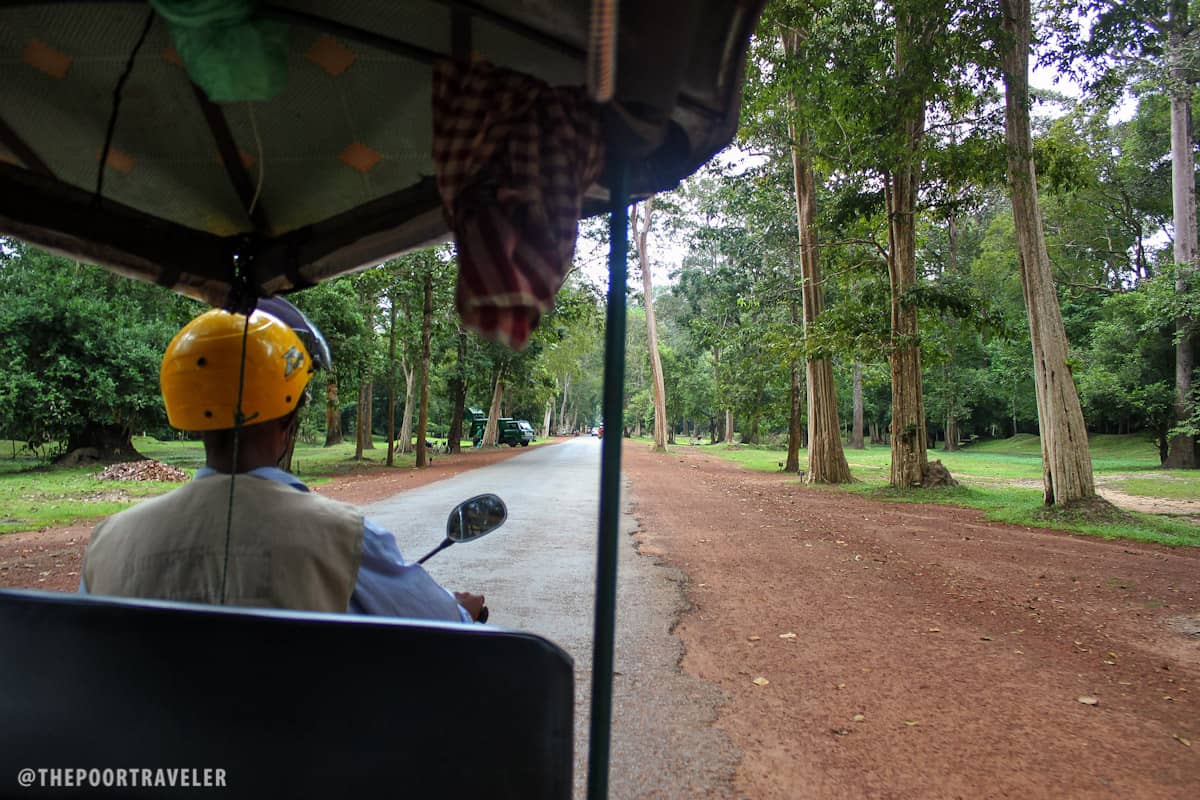
Around 1500 meters from the South Gate, we reached a parking area in front of a stunning set of ruins. From afar, it looked to me like just piles of grey bricks set up in a chaotic yet organized manner. I could not figure out what to make of it from a distance. But the more I stepped closer to it, the more I was bombarded with details that gave this temple so much character. I was already standing by the main doorway when I finally noticed a shape of a calm face protruding from one of the towers. And oh, there’s another. And there’s more. As soon as I stepped inside, it dawned on me that this temple had many faces.
Whose faces, you ask? Well, that was my question too. But first, a short history.
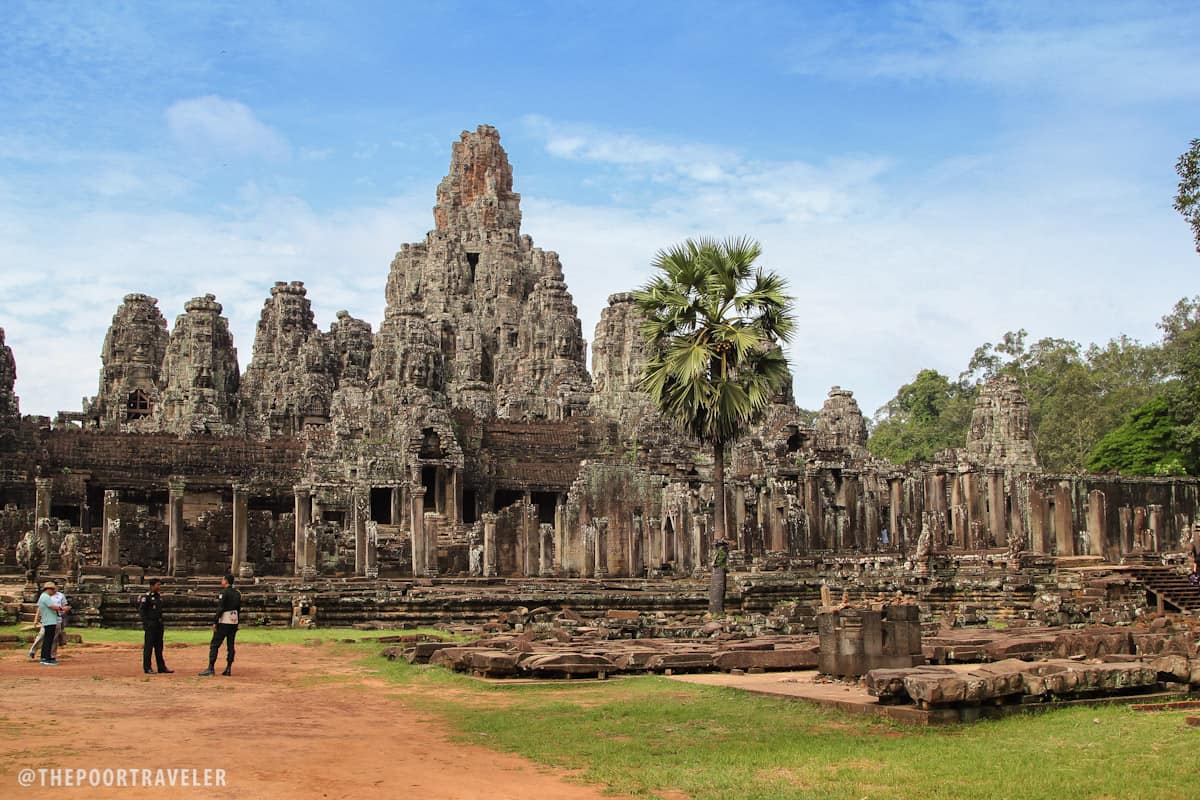
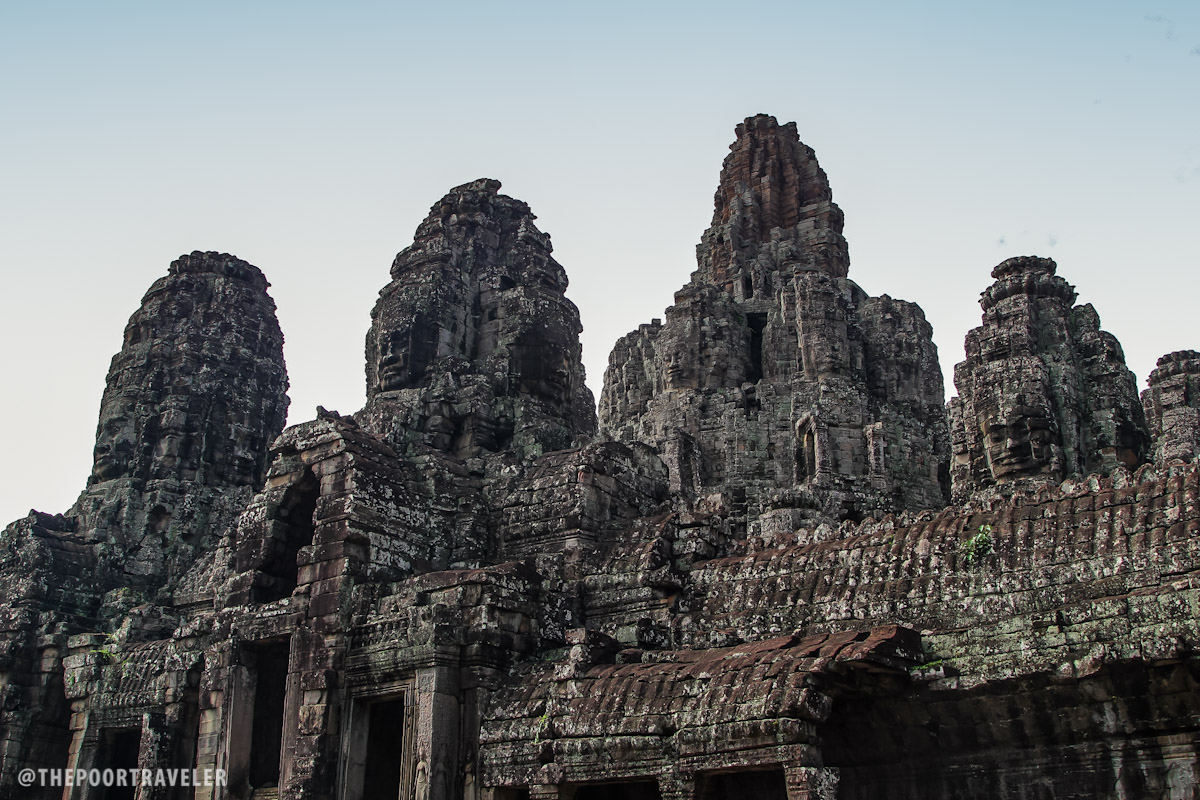
At the very heart of Angkor Thom, the Bayon Temple is regarded by many as the most important structure of the ancient city. It was constructed around 1190 AD, about a hundred years after the Angkor Wat, under the rule of King Jayavarman VII. Unlike Angkor Wat which was originally built for Hinduism, the Bayon is a Buddhist site but Hindu elements can still be seen in its architecture. Like Angkor Wat, it also houses exquisite galleries of bas relief scenes depicting important events in history.
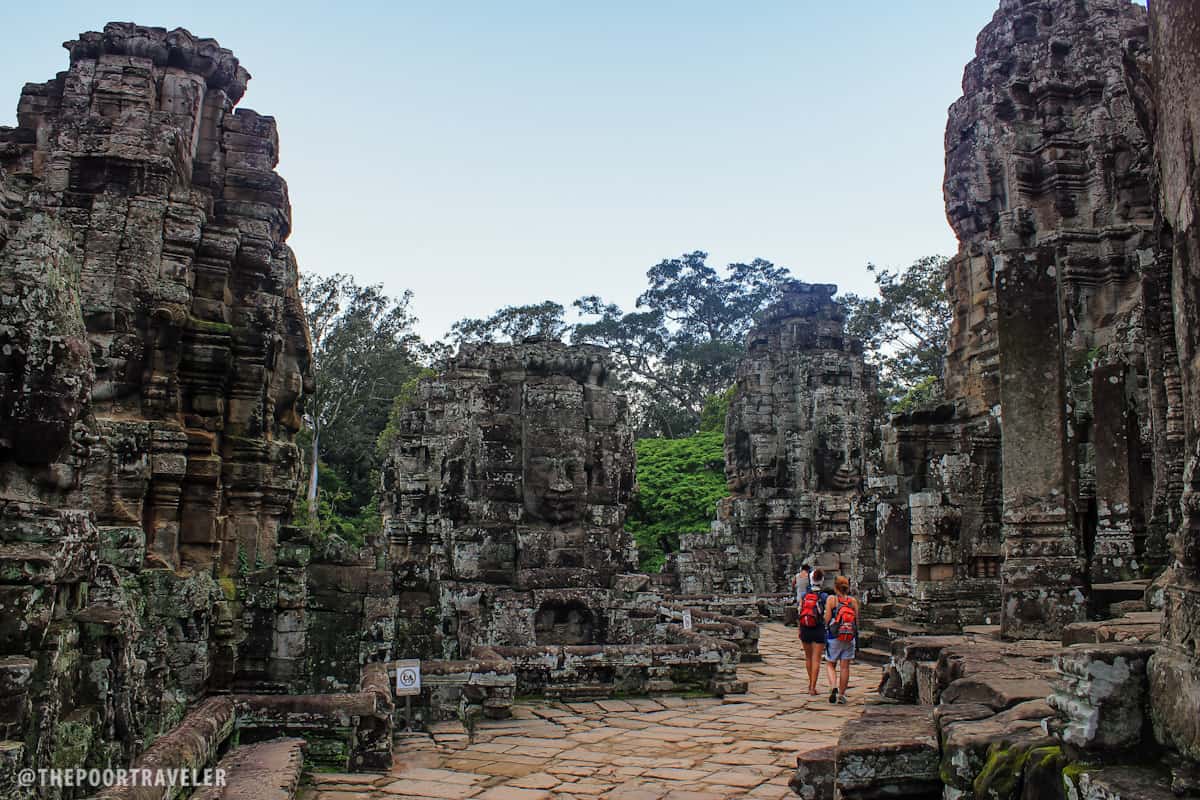
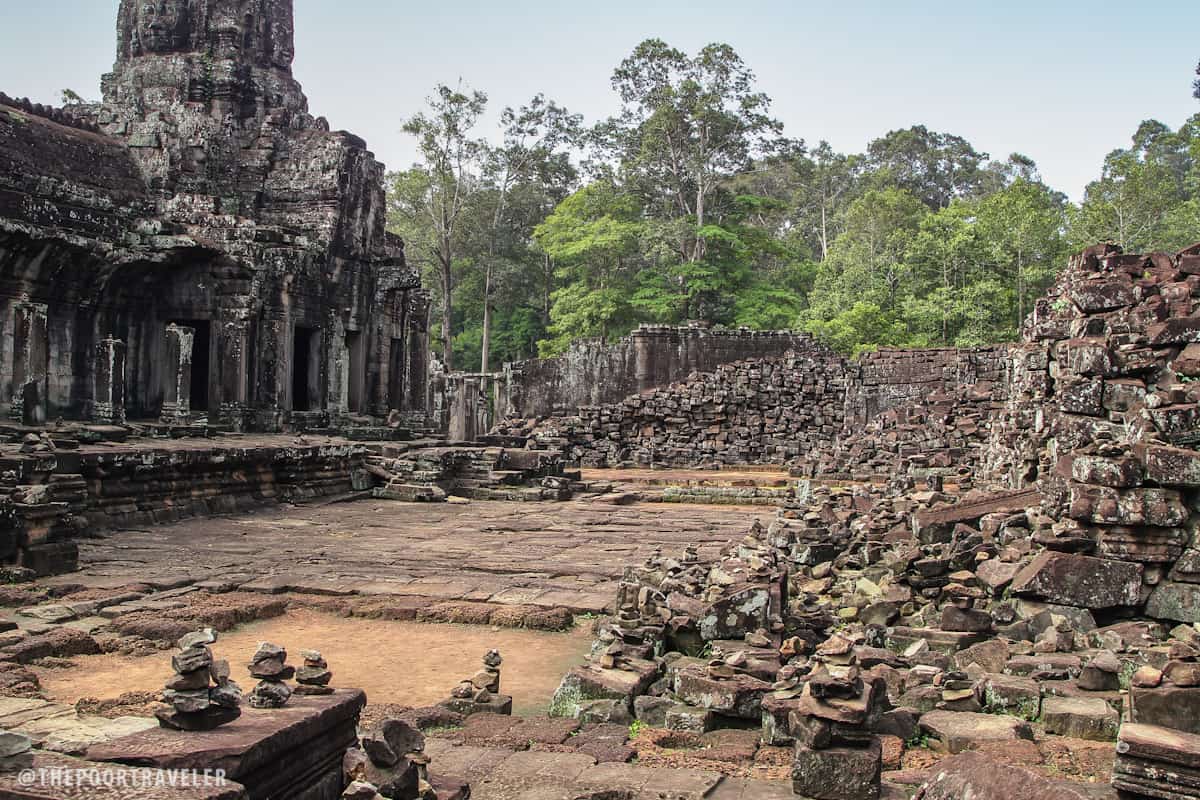
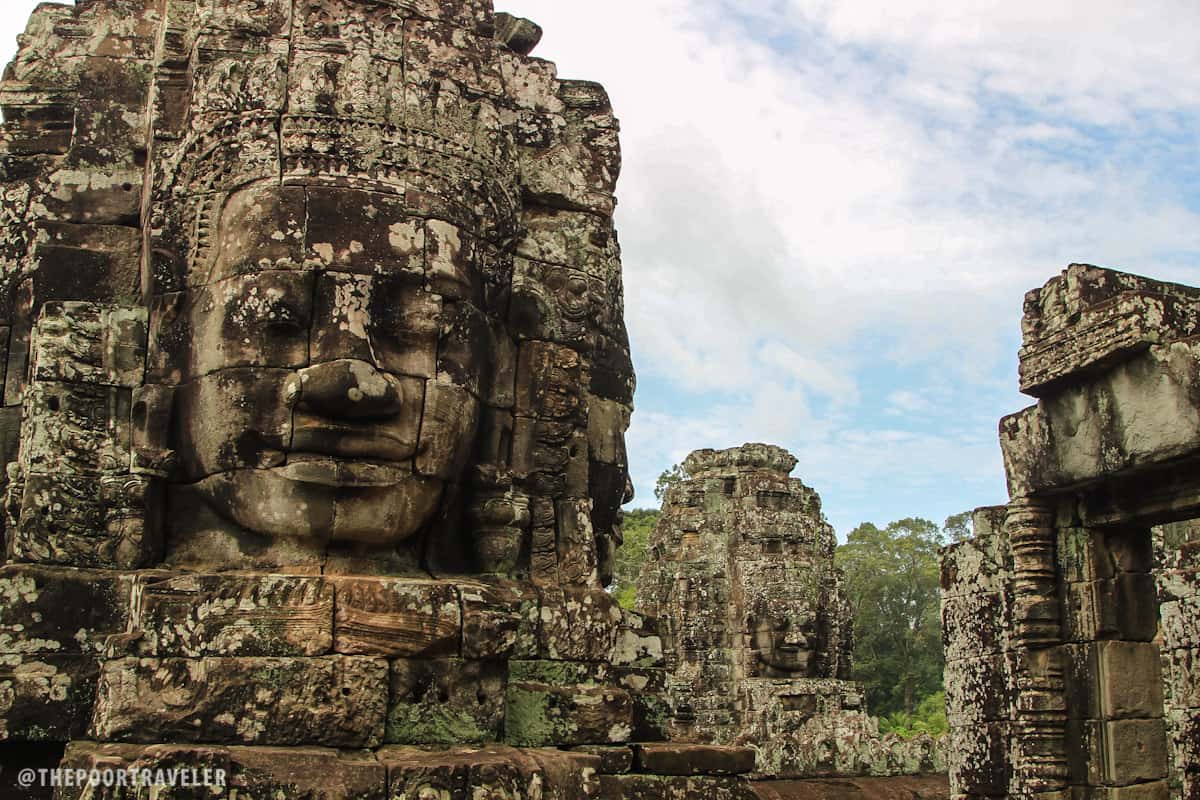
What sets it apart from all the other temples in the Angkor Archaeological Park are the ubiquitous, mysterious faces that are in every tower wall of the structure — over 216 of them on 54 towers! Whose face is it has been a subject of much debate. The generally accepted theory is that the images on the towers are of Avalokitesvara, a bodhisattva or an enlightened being in Buddhism. But others have put forward an idea that the face is actually of King Jayavarman VII himself, citing the similarities of the features of the faces on the temple to the king’s appearance. It is said to signify the omnipresence of the king. After all, many ancient kings were perceived to be of divine nature during their reign.
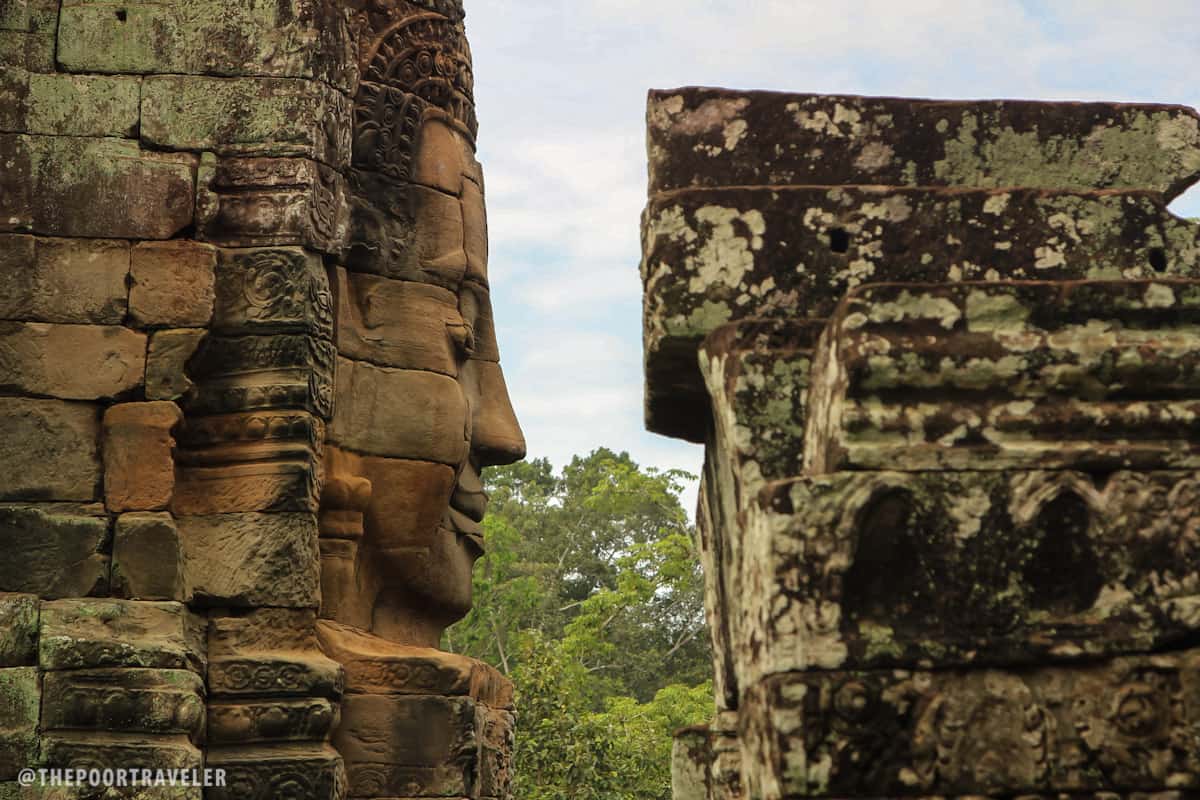
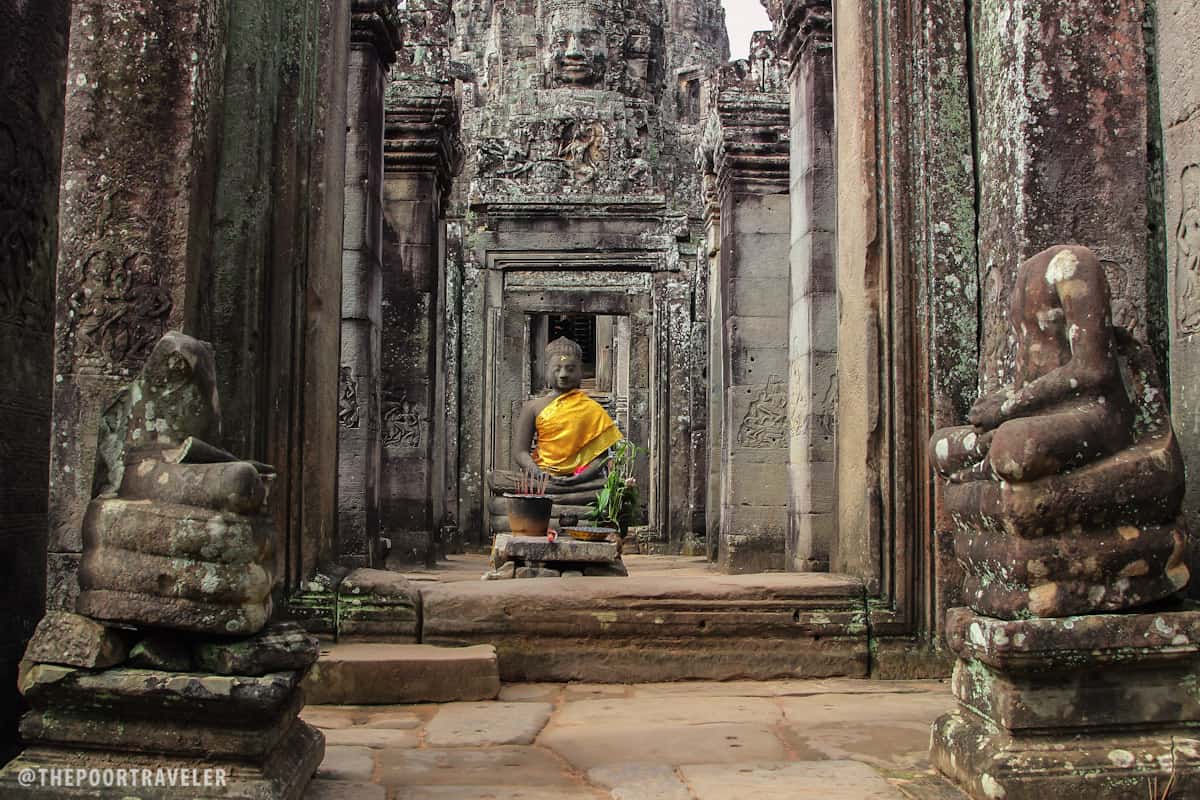
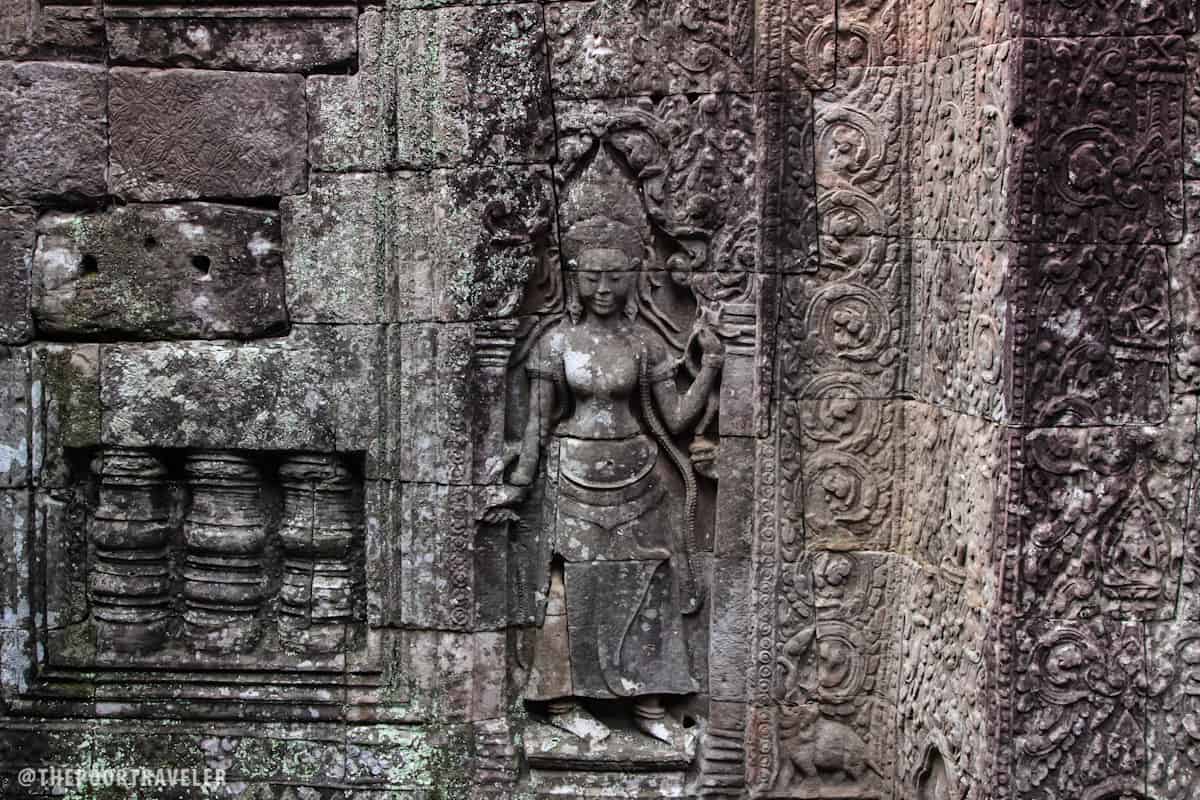
If that was the goal when they built it, then they succeeded. Of all the temples in Siem Reap, Bayon definitely tops my favorites list. Not just because of its involution and sheer beauty but also the unforgettable atmosphere that it fosters within its crumbled walls. As I walked around the intricate galleries and looked at the carvings on the walls, there was a constant feeling of being watched. It was as if the faces moved. As if their eyes followed the curious visitors. As if they were in possession of a secret that only they held the key to. And for that, I imagined, they curled those lips again to form another one of those indecipherable smiles.
How to get here: From the city center of Siem Reap, hire a tuktuk for an Angkor Tour for only USD12. This will take you to three different temples at Angkor Archaeological Park including Angkor Wat and Bayon Temple. Just confirm with the driver that you want to go to Bayon. You can also rent a bike for USD1.
